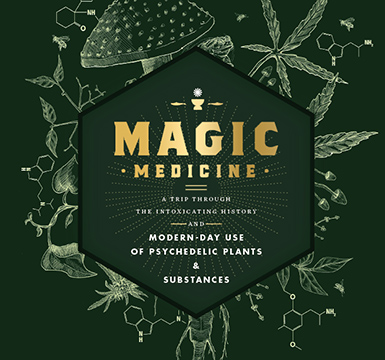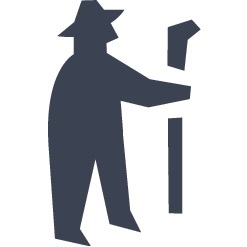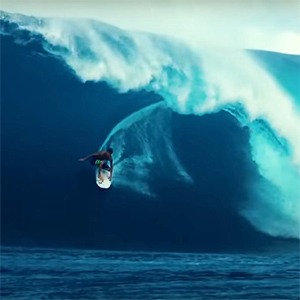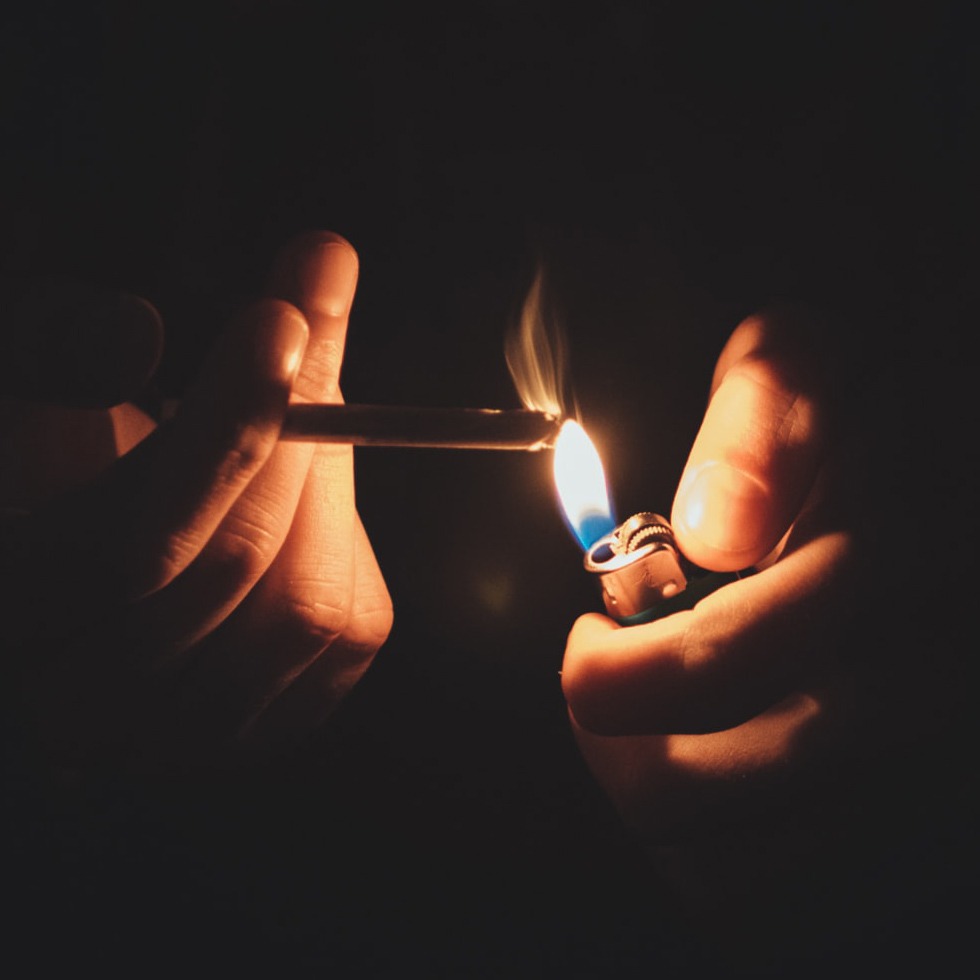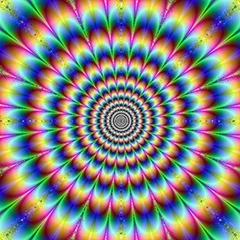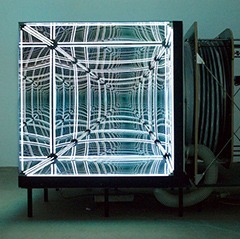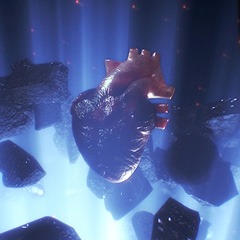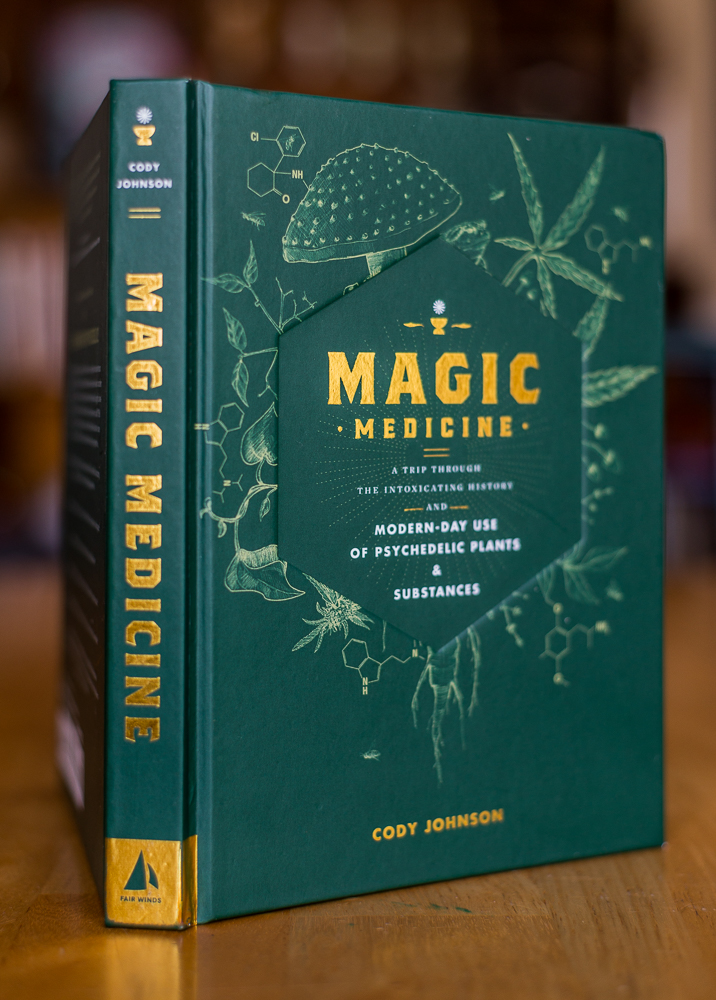What does the language of drug experience look like? What words do we turn to again and again to describe an LSD trip or a cannabis high? Rehabs.com has created some slick graphics to answer these questions (although they are not the first). They performed “extensive linguistic analysis on thousands of written user experiences” drawn from the Erowid database. The graphics cover eight popular drugs, including LSD, DMT, MDMA, and mushrooms. The words shown are the ones most unique to each particular drug, and the size of each word indicates its frequency in user reports.
One major problem with an analysis like this is that these reports are self-selected. People are unlikely to post a report about an average or typical drug experience, and may instead share the most sensational or extreme ones. They may also be more inclined to share an unpleasant experience than a euphoric one, leading to a negative bias in the report database. Erowid also screens the reports. To avoid redundancy, similar-sounding reports are probably eliminated, which skews the data.
Take a look at the cannabis word cloud to see what I mean:
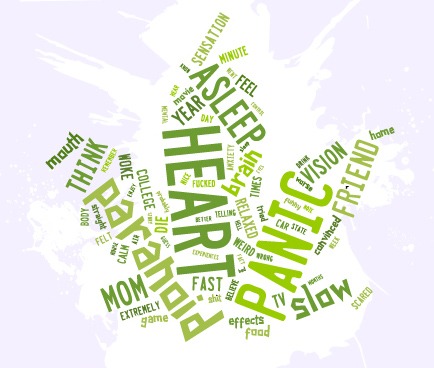
Are paranoid, heart, and panic really the most fitting descriptors for the cannabis high?
Keep in mind that Erowid experience reports include the full spectrum of users, including reckless first-timers paying no mind to “set and setting” — another potential source for a disproportionately negative bias. Word clouds based on data from veteran psychonauts would probably look very different. So take these with a grain of salt.
LSD

Look at those adjectives! Perhaps LSD has been a victim of the negative biases I mentioned, because most psychonauts I know wouldn’t describe LSD with words like mad, bad, insane, stuck, and evil.
I’m surprised by the prevalence of driving-related words like car and road, especially compared to the relatively uncommon universe, music, and mind. How many people are out there driving on acid? I’m also surprised there aren’t more emotional words like feeling or joy. And although an acid-soaked jaunt can be fun, I would not expect walking to be the top LSD-related word. Perhaps it’s because acid lasts so long that some walking between locations is almost inevitable.
Every tripper has become transfixed by the projections of his own mind upon the world. A vacant stare just means it’s working!
Another problem with this analysis is the categorization of words into neutral, positive, and negative. How can you tell the tone of a word when it has been removed from context? For instance crazy, which is marked as negative, could easily be a positive exclamation: “These clouds are going CRAZY!” Same with weird, fucking, and strange. Even a difficult trip with evil undertones could be regarded as positive and cathartic by the user.
And staring is one of my favorite psychedelic activities, yet it’s marked as negative. Every tripper has become transfixed by the projections of his own mind upon the world. A vacant stare just means it’s working!
Mushrooms

Explorers may not have language for the internal aspects of the psychedelic experience.
But let’s look past the assigned connotations. Elements of nature are strong — trees, outside, green, sky — as are visual terms like colors, patterns, and looked. Taking shrooms indoors seems popular too, judging by the prevalence of room and wall.
I’m surprised once again to see a lack of emotional words, given how deeply moving the psilocybin experience can be. And God, which figured prominently in the LSD graphic, is strangely absent from this one.
These descriptions seem superficial and world-focused, often describing the most obvious layers of the psychedelic experience such as its visual features. The reports are rooted in consensus reality, referring to many real-world objects like trees, cars, and rooms. I regard the inward journey as an advanced psychedelic technique, and there seems to be a distinct lack of it in these graphics.
It’s difficult to dive into the deeper layers when you’re being bombarded by patterns and fractal visions for the first time.
Fourth, explorers may not have language for the internal aspects of the psychedelic experience. Perhaps they are doing the best they can with the reference points they have, most of which are external objects, patterns, and colors. Even Aldous Huxley discussed the folds in drapery for several pages while trying to make a more abstract point.
The inner journey is difficult to describe because it is inherently subjective. If we use a wide variety of terms to describe our inner landscapes, then no single term will accumulate enough usage to land on any of these charts. Meanwhile, words from consensus reality like trees and sky are clear and unambiguous, and easily land among the most common terms.
Lastly, even if emotional, personal, and abstract terms did appear in the original texts, they may not show up on the graphics if they were common to several drug experiences. These graphics were created specifically to characterize the unique aspects of each drug, and it’s possible that words like love, euphoria, time, and feeling were not drug-specific enough to warrant an appearance.
DMT
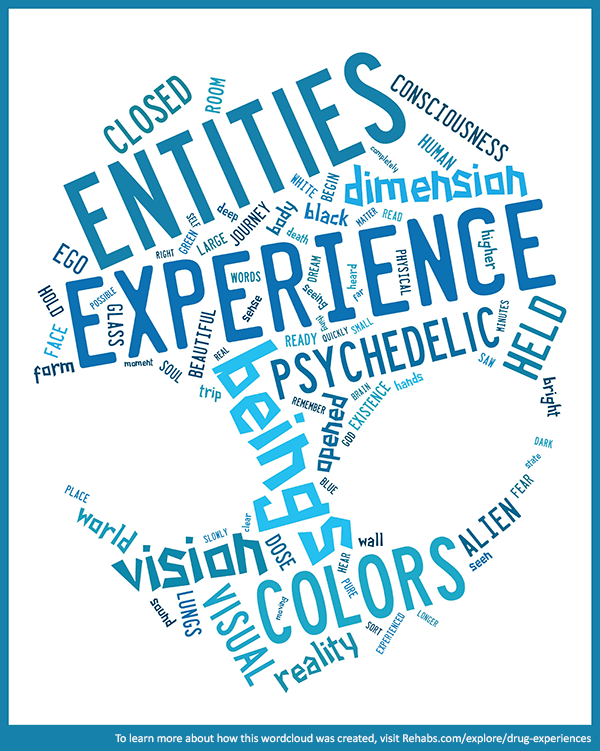
No real surprises here — beings and entities are ranked very high, as are visual terms like colors and vision. The intensity and depth of the DMT experience is indicated by prominence of fundamental terms like consciousness, dimension, and experience. The trip pulls the carpet out from under us so thoroughly that we are left fumbling for language, grasping at abstract terms like reality and existence in order to express how profoundly our perceptions have been tweaked.
I’m pleased to see human, journey, and beautiful make an appearance, but I’m surprised by the relative scarcity of negative terms like anxiety and fear. Some resistance to such a mind-bending experience is natural and, I would think, fairly common. I thought love and God might show up too, but I’ll settle for alien.
MDMA
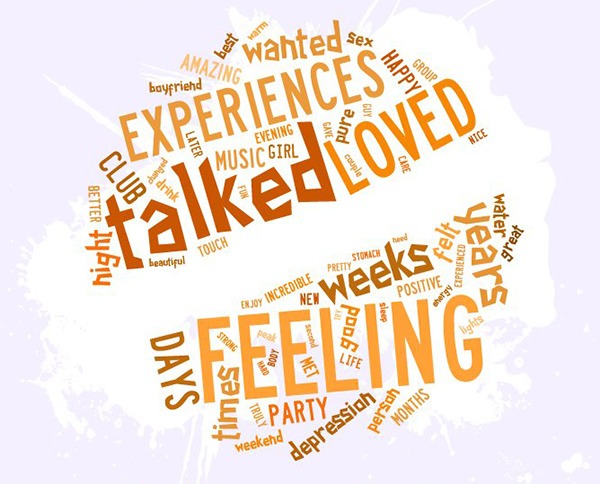
Now this one looks pretty accurate. My only objection is that depression likely refers to the days after ingestion, and not to the MDMA experience itself.
See the rest of the word clouds here.
![]()
Word Clouds by Melody Dye (2012)
Melody Dye, a cognitive science doctoral student at Indiana University, published a similar project about a year ago on Scientific American. She also used Erowid for her source data, but came up with considerably different results. For instance, here is her psilocybin graphic, mysteriously shaped like a foot:
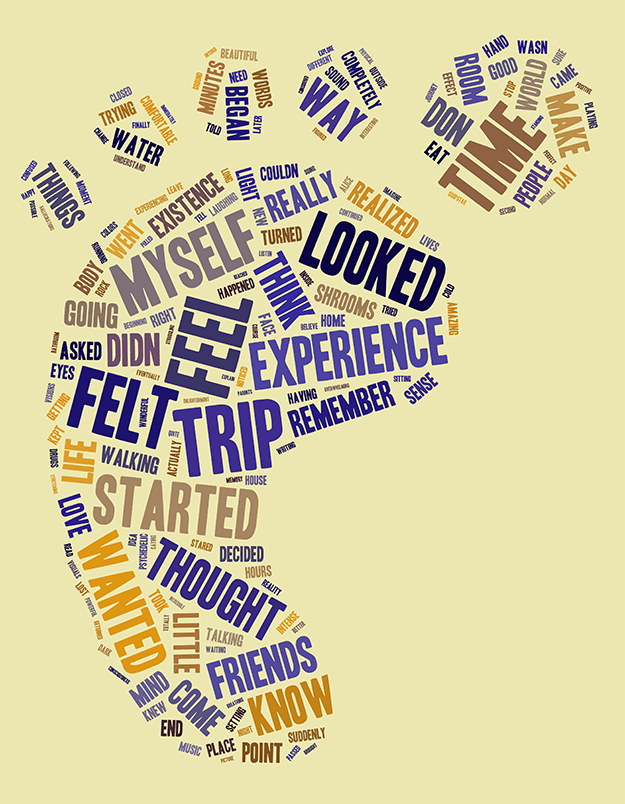
This captures more of the the internal, emotional aspects that I found lacking in the Rehabs.com version. This leads me to believe that analytical techniques play a large part in the resulting word cloud. As I mentioned earlier, it may be that these words — feel, experience, myself, time, love — apply to several drugs, and were therefore stripped from the “unique word” graphics produced by Rehabs.com.
Melody also covered some drugs that did not appear in the new analysis. Here’s mescaline, shaped like a turtle because why not?
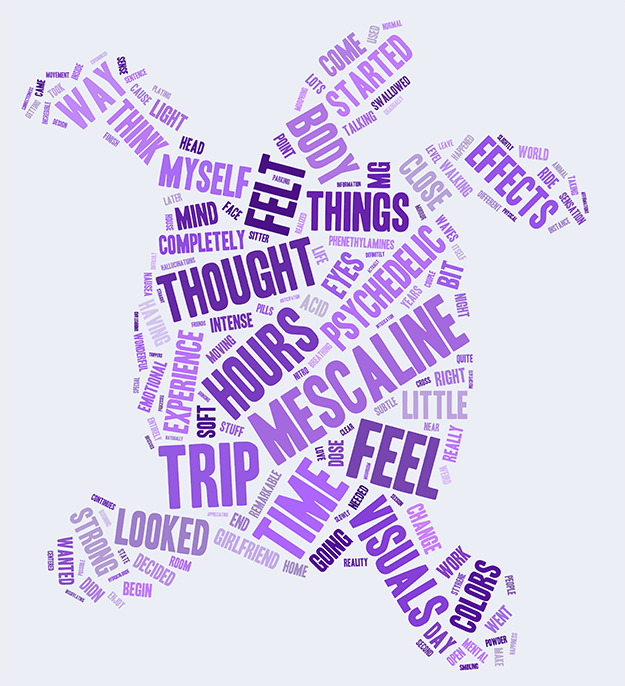
And ketamine:
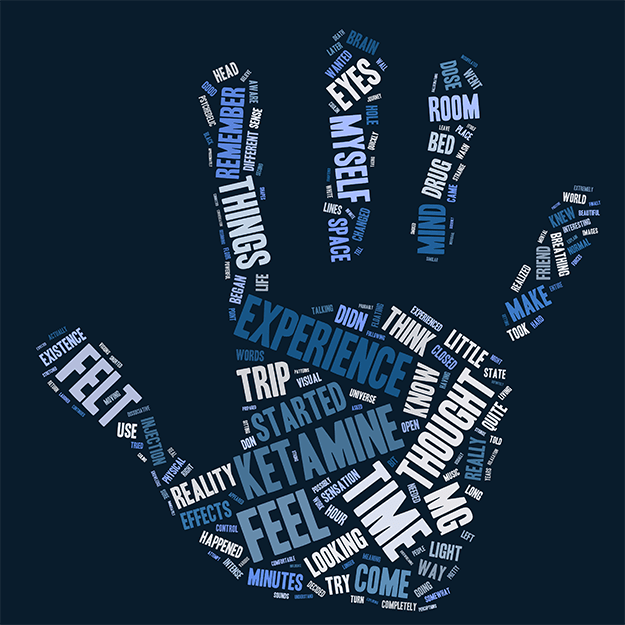
And lastly, ayahuasca:
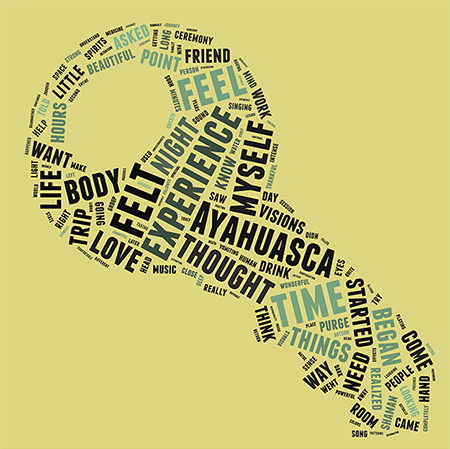
I’m beginning to see why the newer analysis often strips out words like felt and experience — they appear in every word cloud without telling us anything about the drug.
You can find the rest of Melody’s word clouds at Scientific American. She can also be found on Twitter and on her website, moximer.com.
Liked this post? Subscribe to my RSS feed to get much more!

